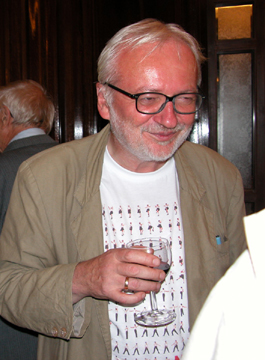
Shopping centers are mostly not quality buildings, experts say
 |
According to architect Petr Lešek from the Projektil studio, even today, department stores can be quality architecture. "However, there must be an enlightened investor or at least an enlightened local government. An example of the former is the Austrian chain M-Preis, whose department stores were designed by top international architects," he says. But even retail chains that "churn out box after box" can choose a quality approach, he adds.
"Examples include Baumax in Maribor designed by architects Njiric-Njiric or Billa in Litomyšl by architects Rusín and Wahl," Lešek notes. In the case of Litomyšl, which emphasizes public space and the harmony of its historical appearance with new buildings, the city required a quality architect. "They waited seven years, but it paid off. The problem is mainly that retail chains in our country do not reach out to top architects. The only ones who can force this are local authorities," Lešek recalls, who as a member of the Czech Chamber of Architects calls for more frequent architectural competitions.
Department stores used to be built exclusively in city centers, which was still the case in the 80s. "The change occurred in the 90s, when these centers left the context of the city and began to be built in open spaces. There, it is no longer necessary to think about what form is suitable for the city; the requirements for it weaken almost automatically," Švácha says. Today's shopping centers are more like uniform containers than architectural works with recognizable authorship.
However, if such a large shopping center remains in the city, like Velký Špalíček in Brno or Palladium in Prague, it behaves like an "intruder from the suburb," and its presence harms the city in all possible ways. "From this perspective, Liberec seems especially desperate to me, as several shopping centers have penetrated its core at once," says the historian, who has significantly advocated for the Prague Máj to become a cultural monument - which, according to the initiators of the proposal, was the only way for the building to retain its form.
Retail chains quickly understood that no one is forcing them towards quality and that they save money by unifying projects, Lešek says. He sees the problem as the demolition of even historically significant department stores, which are replaced by standardized "boxes." An example is Liberec, where a banal new building has arisen on the site of the Ještěd department store, representing the brutalist architecture of the 70s and demolished despite protests from experts.
Companies owning shopping centers will not strive for quality architecture themselves; they have no reason to do so, experts agree. "On the contrary, they spend large sums on analyzes of shopping psychology. They believe that special lighting, product arrangement, and music selection will provide them with a better return on investment than quality architecture," says Petr Lešek. He is troubled that the current state is perceived as the norm and that no one finds it strange that shopping center buildings do not create a quality urban environment. "Before we realize this, a number of 'boxes' will arise that will stick with us for some time. However, examples from abroad fill me with optimism," concludes the architect.
The English translation is powered by AI tool. Switch to Czech to view the original text source.
0 comments
add comment












